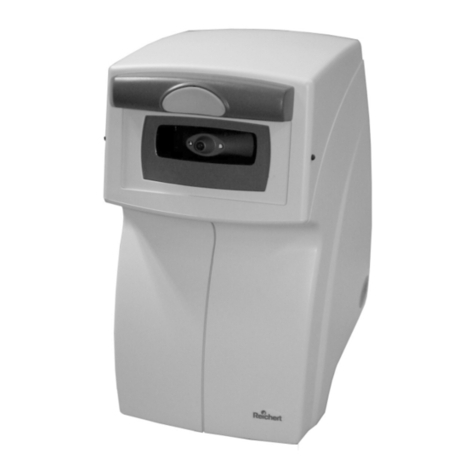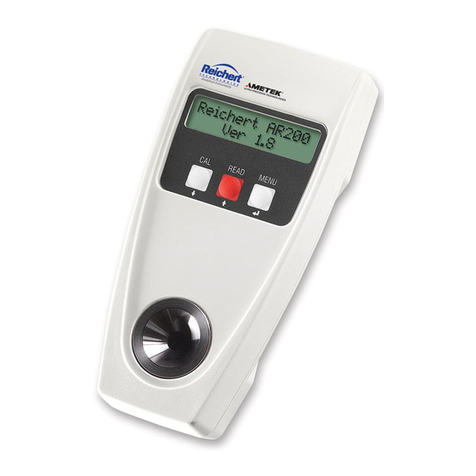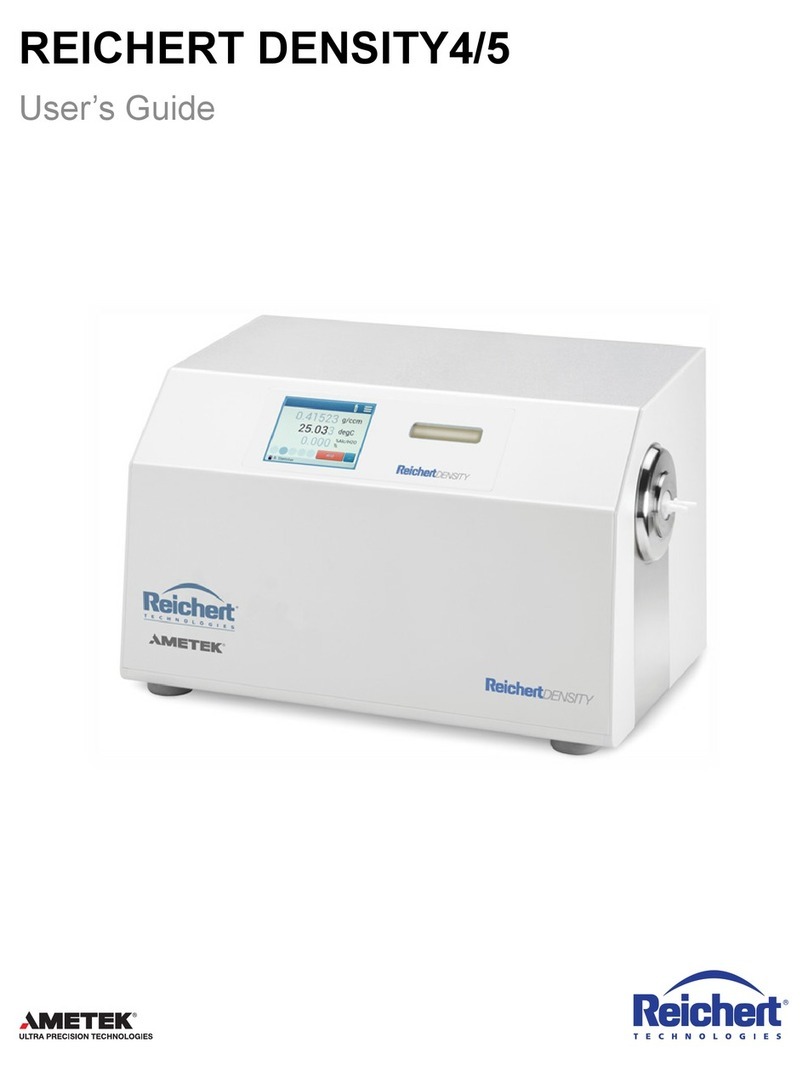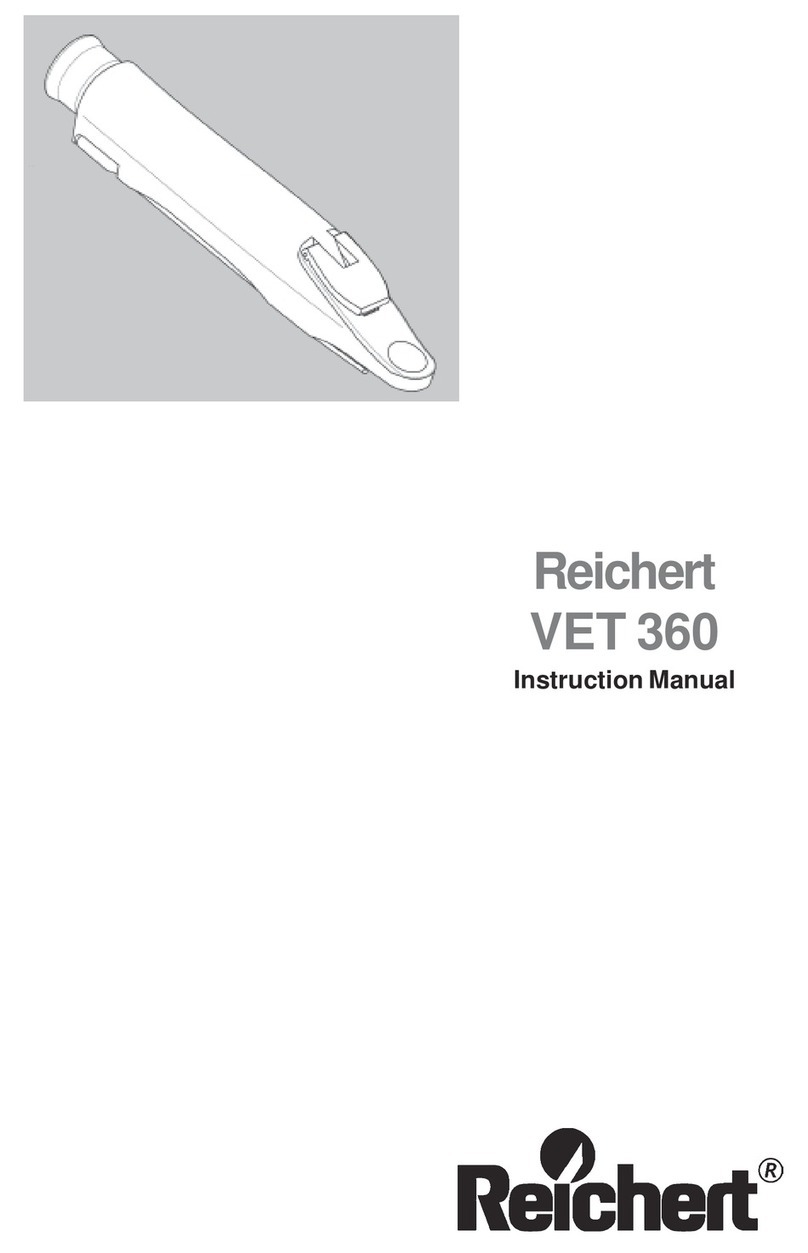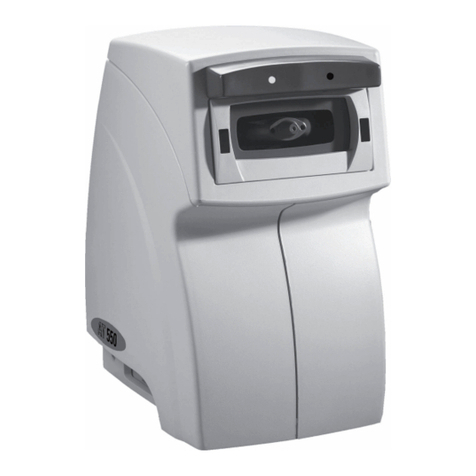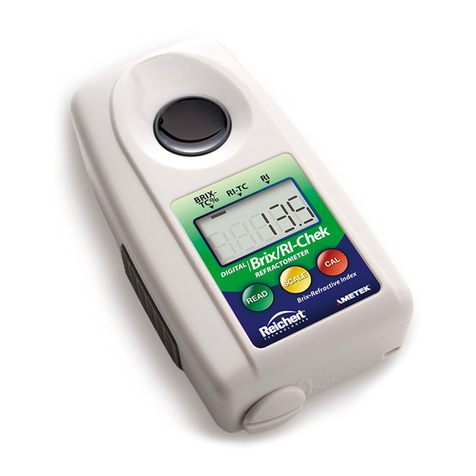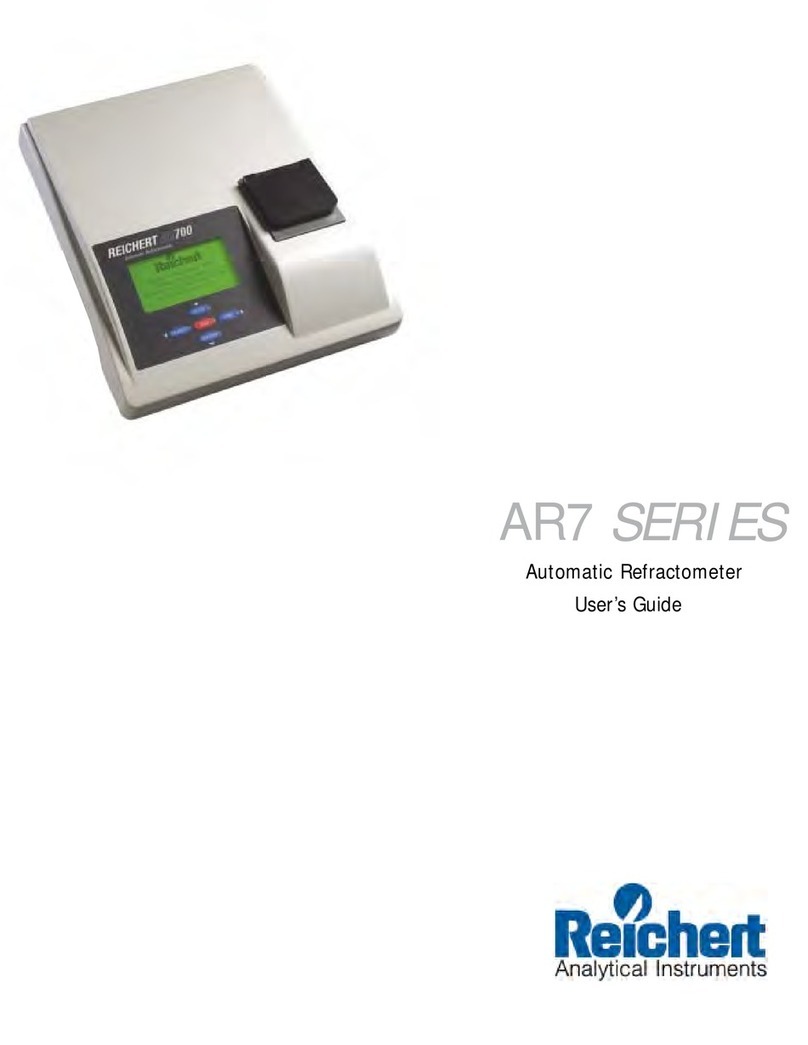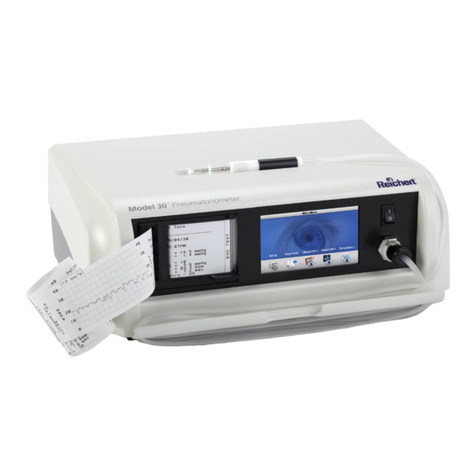
8
Editing Calibration Points
Calibration uid values may change from one lot number to the next. It is also possible to use
alternate uids to calibrate this instrument. As a result, it will become necessary to edit the
stored values to match any new calibration standard.
- To edit a value, select Calibrate, Advanced Options and
press .
- Under Advanced Options select Edit Data and press
.
- Follow the displayed instructions to select a stored value
and press . The value chosen, should be the
closest value to the new standard.
- Use the and keys to edit the highlighted
value, and the key to advance. All three values
must be updated to match the new standard or improper
calibration will result. Press to exit.
- Before the altered value is stored, a “Save these values”
screen will appear. Use the or keys to select
either Yes or No and press to continue.
- To return to the calibration menu options screen, or the
reading mode, follow the displayed choices to exit.
Menu Options
- Calibrate
- Adjust Set Point
- Adjust Span Point
- Advanced Options
- Exit
Edit data
Point 1 1.33299
Point 2 1.40235
Point 3 1.45746
Point 4 1.48989
Point 5 1.51432
Point 6 1.57230
Point 7 1.63039
Exit
l l to choose
Press SELECT to
Continue.
Edit data
Index
1.40235
Temp Coefcient
-0.000389
Reference Temp
25.00
Use l l , READ
to advance, SELECT
to exit
Menu Options
- Calibrate
- Adjust Set Point
- Adjust Span
- Edit Data
- Restore Factory
- Exit
Save these values?
1.40236
-0.000398
25.00
Yes
No
Press SELECT to
Continue.
Sample Temperature Effects on Readings
Refractive Index is a physical property of a material. Refractive index measurements, and the
percent solids results derived from them, are very dependent upon temperature. For most
samples, raising the temperature will lower the refractive index of a sample. Conversely, lower-
ing the sample temperature will raise the refractive index. This change in refractive index, due
to a change in temperature, will cause an apparent change in concentration unless the reading
is temperature corrected (TC). Before a sample measurement can be temperature corrected
however, the sample needs to reach thermal equilibrium with the instrument. Without tempera-
ture equilibration, the resulting value cannot be considered accurate for direct read values or
temperature corrected (TC) values. This is the result of the sample being in a state of thermal
transition while the refractive index value is captured by the instrument. This is common with all
refractometers.
Automatic Temperature Correction (TC)
Automatic Temperature Correction (TC) is based upon three factors, refractive index, tempera-
ture and temperature coefcient. The relationship of these three factors are used to math-
ematically correct a value as though it was read at a specic temperature. The most common
temperature corrected (TC) temperature is 20 degrees C but it can differ with individual require-
ments. The temperature corrected reading modes (TC) in the Mark III, are based upon sucrose
temperature correction factors developed by ICUMSA. Non-sucrose solutions will have unique
temperature correction factor.
Since most uses of a refractometer is to control concentration, it is useful to eliminate the
temperature effects when viewing instrument readings. One standard method is to have pro-
grammed custom channels that calculate the correct reading at 20 degrees C for a sample that
is being read at other temperatures. The use of a custom channel allows comparing readings
to a formula or process specication at a predetermined temperature without doing complicated
conversions. Please note, that custom channels to do temperature correction, are specic to
the material that the channel was developed for, and most likely will provide poor readings if
used for a different material.
